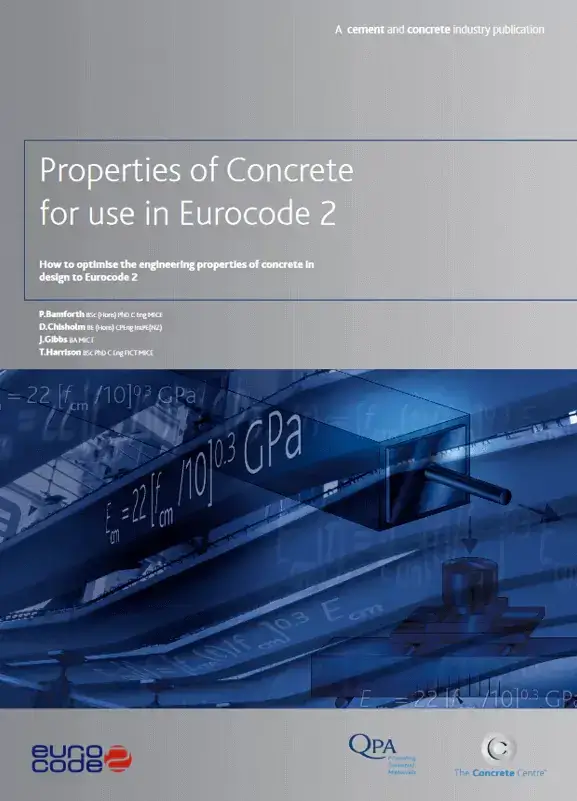Properties of Concrete for use in Eurocode 2
In the design of concrete structures, engineers have the flexibility to specify particular concrete type(s) aimed at meeting the specific performance requirements for their project.
For instance where calculated deflections exceed serviceability limits, the designer can achieve lower deflections by increasing the class of concrete and the associated modulus of elasticity, rather than by resizing members.
With this flexibility goes the responsibility for ensuring that the quality control in concrete production and subsequent site operations will enable the concrete as cast to meet the specified requirements in service.
Typically concrete is specified by compressive strength class, which indicates the
characteristic compressive strength required. However, in design, a range of properties of
concrete are used that are not normally part of the concrete specification. These may
relate to both structural integrity and serviceability. BS EN 1992-1-1, (Eurocode 2: Design
of concrete structures, Part 1-1 – General rules and rules for buildings) Section 3: Materials details
these properties which are generally assumed to be related to the cylinder compressive
strength, expressed either as the characteristic or the mean value, and are calculated
using expressions which include one or other of these values.
The guidance is intended to provide design engineers with a greater knowledge of
concrete behavior, so that they can optimize the use of the material aspects of concrete
in their design.

